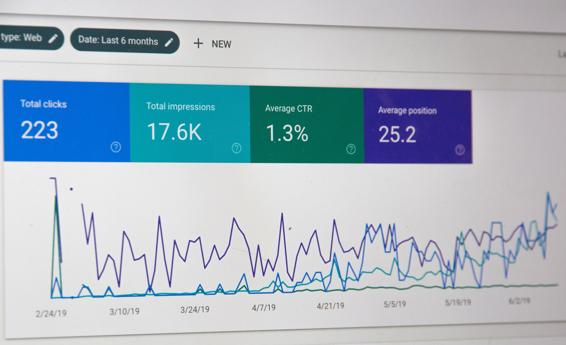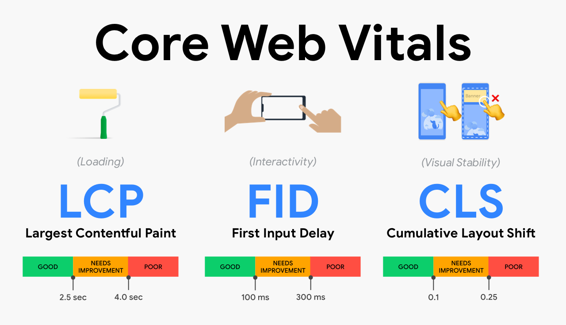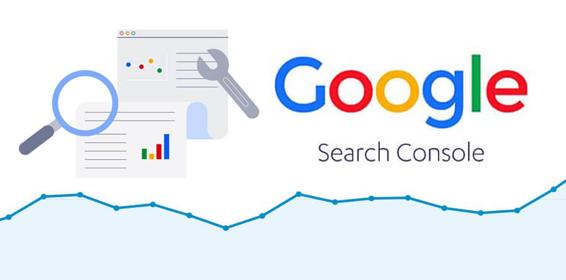Chapter 1: Introduction
Definition and explanation of SEO
As the digital landscape continues to evolve and expand, businesses are increasingly relying on search engine optimization (SEO) to stay ahead of the competition. SEO refers to the process of optimizing a website to rank higher on search engine results pages (SERPs) for specific keywords and phrases. In simpler terms, it's about making sure that your website shows up when someone searches for something related to your business.
The importance of SEO in today's digital landscape SEO is a critical component of digital marketing and is essential for businesses of all sizes. In today's world, where more than 80%
of consumers use search engines to find products and services, a strong online presence is crucial to success. Effective SEO can help businesses generate more organic traffic, leads, and sales, as well as increase brand awareness and credibility.
Why businesses need to focus on SEO
There are many reasons why businesses should focus on SEO, but perhaps the most important is that it can provide a significant return on investment (ROI). Compared to other marketing channels such as paid advertising, SEO has a much higher long-term ROI. While paid advertising can generate quick results, it can also be costly, and once you stop paying for ads, the traffic and leads disappear. On the other hand, SEO can provide sustainable traffic and leads over time, even if you stop actively working on it.
Another reason why businesses need to focus on SEO is that it can help them build brand credibility and authority. When a website appears at the top of the search results, it's seen as a trusted source of information by users. This can lead to increased brand recognition, trust, and loyalty. By consistently producing high-quality content and optimizing your website for search engines, you can establish your business as an industry leader and position yourself as a go-to resource for your target audience.
However, effective SEO is not just about ranking higher on search engines; it's also about providing a seamless user experience. Search engines are continually improving their algorithms to ensure that users are presented with the most relevant and useful content. This means that businesses need to focus on creating a website that not only ranks well but also provides value to users. This includes factors such as site speed, mobile-friendliness, navigation, and content quality.
Ultimately, SEO is about understanding your target audience and providing them with the information they need. By optimizing your website for search engines, you can attract more qualified leads, build brand credibility, and ultimately drive revenue for your business. Whether you're a small startup or a large enterprise, SEO
is an essential part of your digital marketing strategy and should be a top priority for your business.
In conclusion, SEO is a vital component of digital marketing that can help businesses generate more organic traffic, leads, and sales, as well as increase brand awareness and credibility. By focusing on SEO, businesses can establish themselves as industry leaders, build brand recognition and loyalty, and ultimately drive revenue. As the digital landscape continues to evolve, it's crucial for businesses to prioritize SEO and stay ahead of the competition.

Chapter 2: What is SEO & How does it work?
The different types of SEO
There are different types of SEO that website owners can implement to improve their website's search engine ranking. On-page SEO involves optimizing various elements on a website to improve its visibility and ranking on search engines. These include optimizing website content, meta tags, and internal linking structure. Effective keyword research and content optimization play a significant role in improving on-page SEO.
Off-page SEO, on the other hand, focuses on external factors that can influence a website's ranking on search engines. Link building, social media marketing, and influencer outreach are some of the tactics used in off-page SEO. Technical SEO involves optimizing the technical elements of a website to improve its search engine-friendliness. This includes improving website speed, mobile-friendliness, and ensuring structured data markup.
How search engines work
To understand how SEO works, it's important to understand how search engines work. Search engines use automated programs called crawlers or spiders to discover new pages on the web.
These crawlers follow links from one page to another, building a massive index of web pages. Once a crawler discovers a page, it gets added to the search engine's index. The search engine's algorithm then analyzes the page's content, keywords, and other factors to determine its relevance and quality. The search engine then ranks the pages based on their relevance and quality, with the highest-ranked pages appearing at the top of the search results.
How SEO helps search engines find your website Keyword research is an essential aspect of SEO. It involves identifying and analyzing the search terms or phrases that users use to find information online. It helps website owners understand their audience and optimize their website content accordingly. Content optimization involves creating high-quality and relevant content that satisfies user search intent.
Optimizing content with relevant keywords, meta tags, and internal linking can improve a website's search engine ranking.
Backlinks refer to links from external websites that point to a particular page on a website. Search engines consider backlinks as an indicator of a page's quality and relevance. Optimizing a website's structure and navigation makes it easier for search engines to crawl and index its pages. Improving website speed, mobile-friendliness, and ensuring structured data markup can also improve a website's search engine ranking.
In conclusion, SEO is a complex and ever-evolving field that requires continuous effort and optimization. By understanding the different types of SEO and how search engines work, website owners can implement effective SEO strategies and improve their website's visibility, ranking, and overall performance.

Chapter 3: The Benefits of SEO for Businesses
Search Engine Optimization (SEO) offers numerous benefits for businesses of all sizes. In this chapter, we will discuss how SEO can improve a website's visibility, user experience, conversion rates, credibility, and authority.
Increased Visibility and Traffic
The primary benefit of SEO is increased visibility and traffic to a website. SEO helps businesses to appear at the top of search engine results pages (SERPs) for relevant search terms, which increases the likelihood of users clicking through to the website. This, in turn, can lead to increased website traffic and greater brand awareness.
For example, let's say you run a local coffee shop and want to increase foot traffic to your store. By optimizing your website for keywords such as "best coffee shop in [city name]" or "coffee near me," you can appear at the top of local search results when users search for these terms. This can drive more potential customers to your website, and ultimately to your physical location.
Improved User Experience
SEO also plays a significant role in improving user experience.
Websites that are optimized for SEO tend to be more user-friendly and easier to navigate. By implementing best practices such as clear website structure, intuitive navigation, and fast loading times, businesses can ensure that users can find the information they need quickly and easily.
For example, a website that is optimized for mobile devices can provide a better user experience for visitors who are browsing on their phones. By using responsive design and ensuring that the website loads quickly on mobile devices, businesses can cater to the needs of their mobile users and provide a seamless browsing experience.
Better Conversion Rates
SEO can also help businesses improve their conversion rates.
By targeting the right keywords and optimizing their website content, businesses can attract more qualified leads to their website. When visitors arrive at a website that meets their needs and provides them with valuable information, they are more likely to convert into customers.
For example, a business that offers online courses can optimize their website for keywords such as "online course provider" or "best online courses." When users search for these terms, they are more likely to find the business's website and be interested in the courses that the business offers. By providing high-quality content and clear calls-to-action, the business can convert these visitors into paying customers.
Increased Credibility and Authority
SEO can also help businesses establish themselves as credible and authoritative sources in their industry. When a business appears at the top of search results for relevant keywords, it signals to users that the business is a trusted and authoritative source of information.
For example, a business that sells fitness equipment can establish themselves as an authoritative source by creating high-quality content that provides value to their audience. By optimizing their content for relevant keywords and earning backlinks from other credible sources, the business can improve their search engine ranking and establish themselves as a trusted resource in the fitness industry.
In conclusion, SEO offers numerous benefits for businesses of all sizes.
By improving visibility and traffic, user experience, conversion rates, credibility, and authority, businesses can increase their online presence and drive more revenue. By investing in effective SEO strategies, businesses can stay ahead of their competition and reach their target audience more effectively.

Chapter 4: How to Implement Effective SEO Strategies
Implementing effective SEO strategies can be challenging, but it is crucial for businesses that want to improve their online presence and drive more traffic to their websites. In this chapter, we will discuss the key steps that businesses can take to implement effective SEO strategies, including keyword research and analysis, on-page optimization, content creation and optimization, and technical SEO audits.
Keyword Research and Analysis
The first step in implementing effective SEO strategies is to conduct thorough keyword research and analysis. This involves identifying the keywords and phrases that your target audience is searching for online, and selecting the most relevant and high-value keywords to target on your website.
There are several tools and techniques that businesses can use to conduct keyword research and analysis, including Google Keyword Planner, SEMrush, Ahrefs, and Moz Keyword Explorer.
These tools can provide insights into the search volume, competition level, and potentia lvalue of different keywords, allowing businesses to make informed decisions about which keywords to target.
On-Page Optimization
Once businesses have identified the most relevant and high-value keywords to target, the next step is to optimize their website's on-page elements. On-page optimization involves optimizing the content and structure of your website to make it more attractive to search engines.
Some of the key on-page elements that businesses should focus on include meta tags, page titles, header tags, internal links, and image alt tags. By optimizing these elements with the target keywords and providing high-quality, relevant content, businesses can improve their website's visibility and ranking in search engine results pages.
Content Creation and Optimization
High-quality, relevant content is a critical component of effective SEO strategies. By creating and optimizing content that is valuable and engaging to your target audience, businesses can attract more traffic to their website and improve their search engine ranking.
Some of the key factors to consider when creating and optimizing content for SEO include relevance to target keywords, high-quality writing, readability, and formatting.
Businesses should also consider incorporating multimedia content such as images and videos to make their content more i
d h
bl
Technical SEO Audits
In addition to on-page optimization and content creation, businesses should also conduct regular technical SEO audits to ensure that their website is optimized for search engines.
Technical SEO involves optimizing the technical elements of your website, including site speed, mobile-friendliness, crawlability, and security.
Some of the key factors to consider when conducting a technical SEO audit include website loading speed, mobile responsiveness, schema markup, SSL certificates, and XML sitemaps. By addressing these technical elements and ensuring that your website is optimized for search engines, businesses can improve their website's ranking and visibility.
In conclusion, implementing effective SEO strategies requires a comprehensive approach that incorporates keyword research and analysis,
on-page
optimization,
content
creation
and
optimization, and technical SEO audits. By following these steps and continuously monitoring and adjusting your SEO strategy, businesses can improve their online presence, attract more traffic to their website, and stay ahead of their competition.

Chapter 5: Off-page Optimization and Link Building Strategies
Off-page optimization and link building are critical components of effective SEO strategies. In this chapter, we will discuss the key concepts and strategies for building high-quality backlinks to improve your website's visibility and ranking in search engine results pages.
What is Off-page Optimization?
Off-page optimization refers to the actions taken outside of your website to improve its visibility and ranking in search engine results pages. This includes building high-quality backlinks, social media engagement, guest blogging, and influencer marketing.
Off-page optimization is important because it signals to search engines that other reputable websites and online communities recognize the value of your website and content. By building a strong off-page optimization strategy, businesses can improve their website's credibility and authority, leading to higher search engine rankings.
The Importance of Link Building Link building is a critical component of off-page optimization and involves acquiring high-quality backlinks from other reputable websites.
Backlinks are links from other websites to your website and are considered one of the most important ranking factors for search engines.
The more high-quality backlinks a website has, the more likely it is to rank higher in search engine results pages. However, it is important to note that not all backlinks are created equal, and search engines prioritize high-quality, relevant backlinks from reputable websites.
Strategies for Building High-Quality Backlinks There are several strategies businesses can use to build high-quality backlinks to their website:
a. Guest Blogging - Guest blogging involves writing high-quality content for other reputable websites in your industry in exchange for a backlink to your website.
b. Influencer Marketing - Collaborating with influencers in your industry to create high-quality content and promote it on their social media channels can help build backlinks to your website.
c. Broken Link Building - This strategy involves identifying broken links on other websites and offering to replace them with a relevant link to your website.
d. Content Marketing - Creating high-quality, shareable content on your website can attract backlinks from other websites and online communities.
Common Link Building Mistakes to Avoid While link building can be an effective strategy for improving your website's visibility and ranking in search engine results pages, there are several common mistakes businesses should avoid:
a. Buying Links - Paying for backlinks is against search engine guidelines and can result in penalties and a decrease in website ranking.
b. Spammy Backlinks - Acquiring backlinks from low-quality or irrelevant websites can harm your website's credibility and authority.
c. Duplicate Content - Republishing the same content on multiple websites with backlinks to your website can result in penalties and a decrease in website ranking.
d. Anchor Text Overuse - Overusing exact match anchor text in backlinks can result in penalties and a decrease in website ranking.
In conclusion, off-page optimization and link building are critical components of effective SEO strategies. By building a strong off-page optimization strategy and acquiring high-quality backlinks, businesses can improve their website's visibility and ranking in search engine results pages, driving more traffic to their website and increasing their online presence. However, it is important to avoid common link building mistakes and continuously monitor and adjust your SEO strategy to stay ahead of your competition.

Chapter 6: Common SEO Mistakes to Avoid
Search engine optimization (SEO) is an essential component of digital marketing that can help businesses improve their online visibility, attract more traffic, and generate leads and sales.
However, SEO is not a one-time task that you can set and forget.
It requires ongoing effort, strategy, and monitoring to achieve and maintain the desired results. Unfortunately, many businesses make common SEO mistakes that can hurt their rankings, traffic, and conversions. In this chapter, we will discuss the most common SEO mistakes to avoid.
Keyword stuffing
Keyword stuffing refers to the practice of overusing keywords or phrases in content, meta tags, or URLs to manipulate search engines and improve rankings. Keyword stuffing may include repeating the same keyword or phrase multiple times, using irrelevant keywords, or hiding keywords by using the same color as the background. Keyword stuffing not only violates search engine guidelines but also makes your content difficult to read and lowers the user experience. Instead of keyword stuffing, focus on creating high-quality, relevant, and informative content that addresses the user's search intent and includes natural variations of your target keywords.
Duplicate content
Duplicate content refers to the practice of copying or replicating content from other websites or within your website without adding any significant value or making substantial changes.
Duplicate content not only violates copyright laws but also confuses search engines and lowers your rankings. Duplicate content can also occur unintentionally, such as when different versions of the same page have different URLs or when printer-friendly or mobile-friendly versions of the same page are indexed separately. To avoid duplicate content, create original and unique content, use canonical tags to indicate the preferred version of a page, and set up proper redirects for outdated or duplicate pages.
Poor website structure
Website structure refers to the organization and hierarchy of your website's pages, categories, and subcategories. A poor website structure can make it difficult for users and search engines to navigate and understand your website's content and relevance. A poor website structure may include broken links, orphan pages, missing meta tags, slow loading speed, and inconsistent or unclear navigation. To improve your website structure, conduct a website audit, create a clear and logical hierarchy, use descriptive and meaningful URLs, and optimize your images and videos.
Ignoring mobile optimization Mobile optimization refers to the practice of designing and optimizing your website's content and user experience for mobile devices, such as smartphones and tablets. With the increasing use of mobile devices for search and browsing, ignoring mobile optimization can result in a poor user experience, high bounce rates, and lower rankings. Mobile optimization may include responsive design, fast loading speed, readable fonts, and mobile-friendly navigation. To optimize your website for mobile, test your website's mobile-friendliness, use a responsive design, compress your images, and prioritize your content based on user intent.
Black hat SEO tactics to avoid
Black hat SEO tactics refer to unethical or manipulative practices that violate search engine guidelines and aim to improve rankings quickly and artificially. Black hat SEO tactics may include keyword stuffing, hidden text, cloaking, link schemes, and spamming. Black hat SEO
tactics not only harm your website's reputation and rankings but also risk penalties and bans from search engines. To avoid black hat SEO
tactics, focus on creating high-quality content, following search engine guidelines, building natural and relevant links, and providing a good user experience.
In conclusion, SEO is a complex and ever-evolving discipline that requires a strategic and ethical approach. By avoiding common SEO
mistakes such as keyword stuffing, duplicate content, poor website structure, ignoring mobile optimization, and black hat SEO tactics, you can improve your website's rankings, traffic, and conversions and build a strong online presence. Remember to focus on providing value to your users, following search engine guidelines, and staying up-to-date with the latest SEO trends and best practices

Chapter 7: Measuring the Success of Your SEO Campaigns
Search engine optimization (SEO) is not only about optimizing your website for search engines but also about measuring the effectiveness of your efforts and adjusting your strategy accordingly.
Measuring the success of your.
SEO campaigns is crucial to understanding your website's performance, identifying areas for improvement, and achieving your business goals. In this chapter, we will discuss the key performance indicators (KPIs) to track, tools for measuring SEO success, and analyzing website traffic and user behavior.
Key Performance Indicators (KPIs) to Track KPIs are measurable metrics that indicate the success or progress of a specific goal or objective. In SEO, KPIs can help you track the performance and impact of your optimization efforts on your website's rankings, traffic, engagement, and conversions. Some of the essential SEO KPIs to track include:
Organic Traffic: Organic traffic refers to the number of visitors that come to your website from search engine results pages (SERPs) without paid advertising. Organic traffic is an important KPI as it indicates the effectiveness of your SEO
efforts in attracting relevant and targeted traffic to your website.
Keyword Rankings: Keyword rankings refer to the position of your website's pages in SERPs for specific keywords or phrases.
Keyword rankings are a valuable KPI as they show how well your website is optimized for your target keywords and how your rankings are improving over time.
Bounce Rate: Bounce rate refers to the percentage of visitors that leave your website after viewing only one page. A high bounce rate can indicate a poor user experience, irrelevant or misleading content, or a lack of engagement opportunities.
Conversion Rate: Conversion rate refers to the percentage of visitors that complete a specific action on your website, such as making a purchase, filling out a form, or subscribing to a newsletter. Conversion rate is a crucial KPI as it measures the effectiveness of your website in achieving your business goals.
Backlinks: Backlinks refer to the number and quality of external links pointing to your website's pages. Backlinks are an important KPI as they indicate the authority and relevance of your website and its content in the eyes of search engines and users.
Tools for Measuring SEO Success
Measuring SEO success requires using the right tools to collect and analyze data from your website, search engines, and competitors. Some of the essential SEO tools to use include: Google Analytics: Google Analytics is a free web analytics tool that tracks and reports website traffic, user behavior, and conversions. Google Analytics can help you measure and analyze your website's KPIs, identify traffic sources, track user journeys, and optimize your content and user experience.
Google Search Console: Google Search Console is a free tool that provides insights into your website's performance in Google search results. Google Search Console can help you monitor and improve your website's presence in search results, track your rankings, identify and fix crawl errors, and submit sitemaps and URL changes.




Ahrefs: Ahrefs is a comprehensive SEO tool that provides data and insights on backlinks, keywords, content, and competitors.
Ahrefs can help you analyze and optimize your website's link profile, track your keyword rankings, research and create content, and monitor your competitors' strategies.
SEMrush: SEMrush is an all-in-one SEO tool that provides data and insights on SEO, PPC, social media, and content marketing. SEMrush can help you conduct keyword research, track your rankings, analyze your competitors' strategies, optimize your content and ads, and measure your results.
Analyzing Website Traffic and User Behavior Analyzing website traffic and user behavior is crucial to understanding how your website's visitors interact with your content, what drives their engagement.

Chapter 8: The Future of SEO: Trends and Predictions
Search engine optimization (SEO) is an ever-changing field that requires businesses to stay up-to-date with the latest trends and developments to remain competitive. As technology advances and user behavior evolves, SEO strategies need to adapt and evolve to keep up. In this chapter, we will discuss the emerging technologies and their impact on SEO, the rise of voice search and its impact on SEO, and the importance of local SEO.
Emerging Technologies and Their Impact on SEO
Emerging technologies, such as artificial intelligence (AI), machine learning, and the Internet of Things (IoT), are transforming the way we interact with search engines and consume information online. These technologies are also shaping the future of SEO and creating new opportunities for businesses to reach their target audience. Some of the emerging technologies that will impact SEO in the future include:
AI and Machine Learning: AI and machine learning are already playing a significant role in search engine algorithms and personalization. These technologies can help search engines understand user intent, provide more relevant results, and optimize content based on user behavior.
IoT: The Internet of Things (IoT) refers to the interconnected network of devices and objects that communicate and exchange data. IoT devices, such as smart speakers, wearables, and home automation systems, are changing the way we search and consume information online. As more IoT devices become connected to search engines, SEO strategies will need to adapt to optimize for voice search and other IoT-enabled interactions.
Augmented Reality (AR) and Virtual Reality (VR): AR and VR
are technologies that enable users to interact with digital content in a more immersive and engaging way. As AR and VR become more widely adopted, SEO strategies will need to incorporate these technologies to provide more engaging and interactive content that attracts and retains users. In terms of SEO, incorporating AR and VR into your website or app can help you stand out from competitors and increase engagement metrics such as time spent on site and bounce rate. For example, a retailer could use AR to allow customers to try on clothes virtually, while a travel website could use VR to provide immersive virtual tours of destinations. These experiences can be shared on social media, generating more backlinks and traffic to your website.
The Rise of Voice Search and Its Impact on SEO
Voice search is one of the fastest-growing search trends and is expected to account for 50% of all searches by 2022. Voice search is changing the way users interact with search engines and how businesses optimize their content for search. Here are some ways voice search is impacting SEO: Conversational Keywords: Voice search queries tend to be more conversational and natural-sounding than traditional text-based searches. Businesses will need to optimize their content for long-tail conversational keywords to appear in voice search results.
Featured Snippets: Featured snippets are the boxes that appear at the top of search engine results pages (SERPs) that provide quick answers to user queries. Featured snippets are crucial for appearing in voice search results as they provide a concise and informative answer to the user's question.
Local SEO: Voice search is often used for local queries, such as "near me" searches. Businesses will need to optimize their local SEO strategies to appear in voice search results for these types of queries.
The Importance of Local SEO
Local SEO is becoming increasingly important for businesses that want to attract customers in their local area. Local SEO
strategies involve optimizing your website and online presence to appear in local search results and attract local customers. Here are some tips for optimizing your local SEO: Claim Your Google My Business Listing: Google My Business is a free tool that allows businesses to manage their online presence across Google, including Google Maps and Google Search.
Claiming and optimizing your Google My Business listing can help you appear in local search results and attract local customers.
Use Local Keywords: Using local keywords in your website's content and metadata can help you appear in local search results for relevant queries.
Get Listed in Local Directories: Getting listed in local directories, such as Yelp and Yellow Pages, can help you build your online presence and attract local customers.
Encourage Customer Reviews: helps to increase the visibility of your business in search engine results pages. Search engines like Google consider customer reviews as a signal of the quality and relevance of your business, and they use this information to determine your search ranking. Positive reviews can also improve your click-through rates, as potential customers are more likely to click on a business with a high rating and good reviews.

Chapter 9: AI and SEO: Enhancements and Impacts
The digital landscape is constantly evolving, and AI (Artificial Intelligence) is becoming increasingly integrated into our daily lives. As the use of AI in SEO (Search Engine Optimization) continues to grow, it is important for businesses to understand how these technologies can impact their search rankings and online visibility. In this chapter, we will explore the role of AI in personalizing search results, how AI-powered tools can improve content optimization, the impact of AI on voice search and SEO, the benefits of using AI for keyword research and analysis, the challenges and limitations of AI in SEO, and future trends and predictions for AI and SEO.
The Role of AI in Personalizing Search Results Personalized search results have become a standard feature on most search engines. AI-powered algorithms analyze user behavior, preferences, and search history to provide more relevant and personalized results. Personalization is essential for businesses to reach their target audience effectively and improve their conversion rates.

AI-powered tools can help businesses understand the needs and interests of their customers better. For example, machine learning algorithms can identify patterns in user behavior, such as which types of content users are engaging with or which search terms are most frequently used. By analyzing this data, businesses can tailor their content to meet the needs of their customers and improve their search rankings.
How AI-Powered Tools Can Improve Content Optimization Content optimization is a critical part of SEO. AI-powered tools can help businesses improve their content optimization by analyzing user behavior and identifying areas for improvement.
For example, natural language processing algorithms can analyze the language used in customer reviews or social media posts to identify frequently used keywords or phrases. These insights can then be used to optimize website content and improve search rankings.
AI can also be used to analyze website traffic patterns to identify pages that are underperforming. By identifying the cause of the low engagement rate, businesses can optimize their website and improve user engagement.
The Impact of AI on Voice Search and SEO
Voice search is becoming increasingly popular, with more and more consumers using voice assistants such as Alexa or Siri to search for information online. AI-powered tools can help businesses optimize their content for voice search by analyzing the language used in voice queries and identifying frequently asked questions. By incorporating these phrases into their content, businesses can improve their search rankings and reach a wider audience.
The Benefits of Using AI for Keyword Research and Analysis Keyword research and analysis are essential parts of SEO, but they can be time-consuming and challenging. AI-powered tools can help businesses streamline this process by automatically identifying relevant keywords and analyzing search trends. This data can then be used to optimize website content and improve search rankings.
In addition to improving search rankings, AI can also help businesses identify new opportunities for growth. By analyzing search trends, businesses can identify emerging markets or new products that are in high demand.
The Challenges and Limitations of AI in SEO
While AI has many benefits for SEO, there are also some challenges and limitations. One of the most significant challenges is the lack of transparency in how AI-powered algorithms work. This can make it difficult for businesses to understand why their search rankings may have changed or to identify areas for improvement.
Another challenge is the potential for AI-powered tools to produce biased results. AI algorithms are only as objective as the data they are trained on. If the data used to train the algorithm is biased, the results may also be biased.
Future Trends and Predictions for AI and SEO
AI is expected to continue to have a significant impact on SEO
in the future. As AI technology becomes more advanced, it is likely that AI-powered tools will become even more integrated into SEO strategies. Additionally, as more consumers use voice search and other AI-powered technologies, businesses will need to continue to optimize their content to meet the changing needs of their customers.

Chapter 10: Page Speed & Core Web Vitals In today's digital age, having a fast website is crucial for businesses to succeed. Not only does a fast website provide a better user experience, but it also affects a website's ranking on search engines. Google, for example, has made page speed and Core Web Vitals (CWV) a part of their search algorithm, making it important for businesses to optimize their website's speed and performance. In this chapter, we will discuss what page speed and Core Web Vitals are, why they are important for businesses, and how they can affect SEO.
What is Page Speed?
Page speed is the time it takes for a website to load completely. It is usually measured in seconds and is affected by a variety of factors, including server response time, image optimization, and website code. A website with a fast page speed provides a better user experience and is more likely to be ranked higher on search engines than a website with a slow page speed.

What are Core Web Vitals?
Core Web Vitals (CWV) are a set of metrics that Google has developed to measure a website's user experience. There are three core web vitals: Largest Contentful Paint (LCP), First Input Delay (FID), and Cumulative Layout Shift (CLS). LCP measures how quickly a website loads its main content, FID measures how quickly a website responds to user interaction, and CLS measures how stable a website's layout is. These metrics are important because they provide a standardized way to measure a website's performance and user experience.
Why are Page Speed and Core Web Vitals Important for Businesses?
There are several reasons why page speed and Core Web Vitals are important for businesses. First, a fast website provides a better user experience, which can lead to increased engagement and conversions. Users are more likely to stay on a website if it loads quickly and is easy to navigate, which can increase the likelihood of them making a purchase or taking another desired action.
Second, page speed and Core Web Vitals can affect a website's ranking on search engines. Google has stated that page speed and Core Web Vitals are important factors in their search algorithm, meaning that websites with a fast page speed and good Core Web Vitals are more likely to rank higher on search engine results pages (SERPs).
Third, page speed and Core Web Vitals can affect a website's bounce rate. If a website takes too long to load or has poor user experience metrics, users are more likely to leave the site before engaging with the content. This can lead to a high bounce rate, which can negatively affect a website's ranking on search engines.
How Do Page Speed and Core Web Vitals Affect SEO?
As mentioned earlier, page speed and Core Web Vitals can affect a website's ranking on search engines. Google has stated that these factors are important in their search algorithm, meaning that websites with a fast page speed and good Core Web Vitals are more likely to rank higher on SERPs.
In addition, page speed and Core Web Vitals can affect other SEO
metrics, such as bounce rate and time on site. If a website has a slow page speed or poor Core Web Vitals, users are more likely to leave the site quickly, leading to a high bounce rate and low time on site. These metrics can negatively affect a website's ranking on search engines, making it important for businesses to optimize their website's speed and performance.
How Can Businesses Improve Page Speed and Core Web Vitals?
There are several ways that businesses can improve their website's page speed and Core Web Vitals. Some common strategies include:
Optimizing images: Businesses can optimize their images by compressing them to reduce their file size, which can help improve page speed.
Minimizing code: Businesses can reduce the amount of on their website by eliminating unnecessary elements and using code optimization techniques such as minification, which can help improve page speed.
Using a content delivery network (CDN): A CDN can help improve page speed by distributing a website's content across multiple servers, making it faster and more reliable for users to access.
Implementing lazy loading: Lazy loading is a technique that delays the loading of non-critical elements, such as images and videos, until they are needed. This can help improve page speed and reduce the time it takes for a website to load.
Prioritizing above-the-fold content: Above-the-fold content refers to the content that is visible to users without having to scroll down the page.
By prioritizing above-the-fold content, businesses can improve LCP
and provide a better user experience.
Optimizing server response time: Businesses can improve server response time by using a faster web hosting provider or implementing caching techniques to reduce the load on the server.
Using web performance optimization tools: There are several web performance optimization tools available, such as Google PageSpeed Insights and GTmetrix, that can help businesses identify areas of improvement and optimize their website's speed and performance.
Conclusion
Page speed and Core Web Vitals are important factors in a website's user experience and search engine ranking. A fast website provides a better user experience, can improve SEO metrics such as bounce rate and time on site, and is more likely to rank higher on search engine results pages. Businesses can improve their website's speed and performance by optimizing images and code, using a CDN, implementing lazy loading, prioritizing above-the-fold content, optimizing server response time, and using web performance optimization tools. By prioritizing page speed and Core Web Vitals, businesses can provide a better user experience and improve their online presence.

Chapter 11: Ranking Factor & Mobile Friendliness
In today's digital age, having a mobile-friendly website is essential for businesses to succeed. With more people accessing the internet on their mobile devices than ever before, it's important for businesses to prioritize mobile-friendliness as a ranking factor for SEO. In this chapter, we will discuss the importance of mobile friendliness as a ranking factor for SEO, what mobile friendliness means, and how businesses can optimize their website for mobile devices.
Why is Mobile Friendliness Important for SEO?
Mobile friendliness is important for SEO because it affects a website's user experience and search engine ranking. Google, for example, has stated that mobile friendliness is a ranking factor in their search algorithm. This means that websites that are not mobile-friendly are less likely to rank well on search engine results pages (SERPs) than websites that are mobile-friendly.
In addition, mobile friendliness can affect other SEO metrics, such as bounce rate and time on site. If a website is not optimized for mobile devices, users may have a poor experience, leading to a high bounce rate and low time on site. These metrics can negatively affect a website's ranking on search engines, making it important for businesses to prioritize mobile friendliness as a ranking factor for SEO.
What Does Mobile Friendliness Mean?
Mobile friendliness means that a website is designed and optimized for use on mobile devices, such as smartphones and tablets. This includes having a responsive design that adjusts to the size of the screen, using mobile-friendly fonts and buttons, and optimizing images and videos for mobile devices.
Mobile friendliness also means that a website is easy to use and navigate on mobile devices. This includes having a clear and concise layout, minimizing the need for scrolling, and having clear calls to action that are easy to tap on.
How Can Businesses Optimize Their Website for Mobile Devices?
There are several ways that businesses can optimize their website for mobile devices. Some common strategies include:

Using a responsive design: A responsive design adjusts to the size of the screen, making it easier for users to navigate the website on mobile devices.
Using mobile-friendly fonts and buttons: Fonts and buttons that are too small or difficult to read on a mobile device can make it difficult for users to navigate the website. Using larger fonts and buttons that are easy to tap on can improve the user experience on mobile devices.
Optimizing images and videos for mobile devices: Large images and videos can slow down a website on mobile devices. Optimizing images and videos for mobile devices, such as compressing them to reduce their file size, can help improve page speed and provide a better user experience.
Minimizing the need for scrolling: Mobile users may not want to scroll through long pages of content. By minimizing the need for scrolling and presenting information in a concise and clear manner, businesses can improve the user experience on mobile devices.
Having clear calls to action: Clear calls to action that are easy to tap on can improve the user experience on mobile devices and increase the likelihood of users taking the desired action, such as making a purchase or filling out a form.
Testing the website on multiple devices: Testing the website on multiple devices, such as smartphones and tablets, can help businesses identify areas of improvement and ensure that the website is optimized for all mobile devices.
Conclusion
Mobile friendliness is an important ranking factor for SEO. It affects a website's user experience and search engine ranking, making it important for businesses to prioritize mobile friendliness as a part of their SEO strategy. To optimize their website for mobile devices, businesses can use a responsive design, use mobile-friendly fonts and buttons, optimize images and videos for mobile devices, minimize the need for scrolling, have clear calls to action, and test the website on multiple devices. By prioritizing mobile friendliness, businesses

Chapter 12: Blogging & Content Marketing
Blogging and content marketing are two of the most important components of modern SEO and digital marketing strategies.
These techniques involve creating and sharing content to attract and engage with an audience. In this chapter, we will delve deeper into the world of content marketing, exploring the benefits of long-form content and the importance of repurposing old content to maximize the value of existing content.
Blogging and Content Marketing
Blogging and content marketing are two strategies that go hand-in-hand. Blogging is the process of creating written content in the form of blog posts, while content marketing can encompass a range of content types, including videos, infographics, and podcasts.
The main goal of both blogging and content marketing is to create valuable and relevant content that attracts and engages with an audience. By doing so, businesses can establish themselves as thought leaders in their industry and build relationships with their audience.
Benefits of Long-Form Content Long-form content is typically defined as content that exceeds 1,000 words and provides in-depth information on a particular topic. There are several benefits of long-form content, including: Improved search engine rankings: Long-form content tends to perform better on search engines than short-form content. This is because long-form content is often more comprehensive and provides more value to the user, which search engines recognize and reward.
Increased engagement: Long-form content can help businesses establish themselves as thought leaders in their industry and build relationships with their audience. This can lead to increased engagement with the content and increased brand loyalty.
Greater social media sharing: Long-form content is often more shareable on social media than short-form content. This is because long-form content is often more in-depth and provides more value to the user, which makes it more likely to be shared.
Increased time spent on page: Long-form content can help keep users engaged with a website for longer periods of time. This can signal to search engines that the content is valuable and relevant, which can improve search engine rankings.
Repurposing Old Content
Repurposing old content involves taking existing content and presenting it in a new format or updating it to make it more relevant. There are several benefits to repurposing old content, including:
Maximizing the value of existing content: Repurposing old content can help businesses maximize the value of their existing content by presenting it in a new format or updating it to make it more relevant.
Reaching new audiences: Repurposing old content can help businesses reach new audiences who may not have seen the content in its original format.
Saving time and resources: Repurposing old content can be a cost-effective way to create new content without having to start from scratch.
Improving search engine rankings: Repurposing old content can help improve search engine rankings by providing new and relevant content that search engines will recognize and reward.
There are several ways that businesses can repurpose old content, including:
Turning blog posts into videos: Businesses can repurpose old blog posts by turning them into videos. This can help businesses reach new audiences and provide a fresh perspective on existing content.
Updating old content: Businesses can update old content to make it more relevant and useful to their audience. This can involve adding new information, updating statistics, or revising the content to reflect changes in the industry.
Creating infographics: Infographics are a great way to repurpose existing content and present it in a new format.
Businesses can take existing data and statistics and present them in a visual format that is more engaging and shareable.
Creating eBooks: Businesses can repurpose existing content by compiling blog posts or other content into an eBook.
This can help businesses provide more value to their audience and establish themselves as thought leaders in their industry.

Long Form Content and SEO
Long-form content can be a valuable asset to any SEO strategy.
Search engines, such as Google, value high-quality content that provides value to users. By creating long-form content, businesses can provide in-depth information on a particular topic that satisfies user intent.
Long-form content also allows businesses to incorporate more keywords and internal links into their content, which can improve search engine rankings. However, it's important to ensure that the content is written for humans and not solely for search engines.
Keyword stuffing and low-quality content can lead to penalties from search engines and harm a website's overall rankings.
Content Marketing and Business Goals
Content marketing can help businesses achieve a range of goals, including:
Increased brand awareness: By creating valuable content that provides value to users, businesses can establish themselves as thought leaders in their industry and increase brand awareness.
























